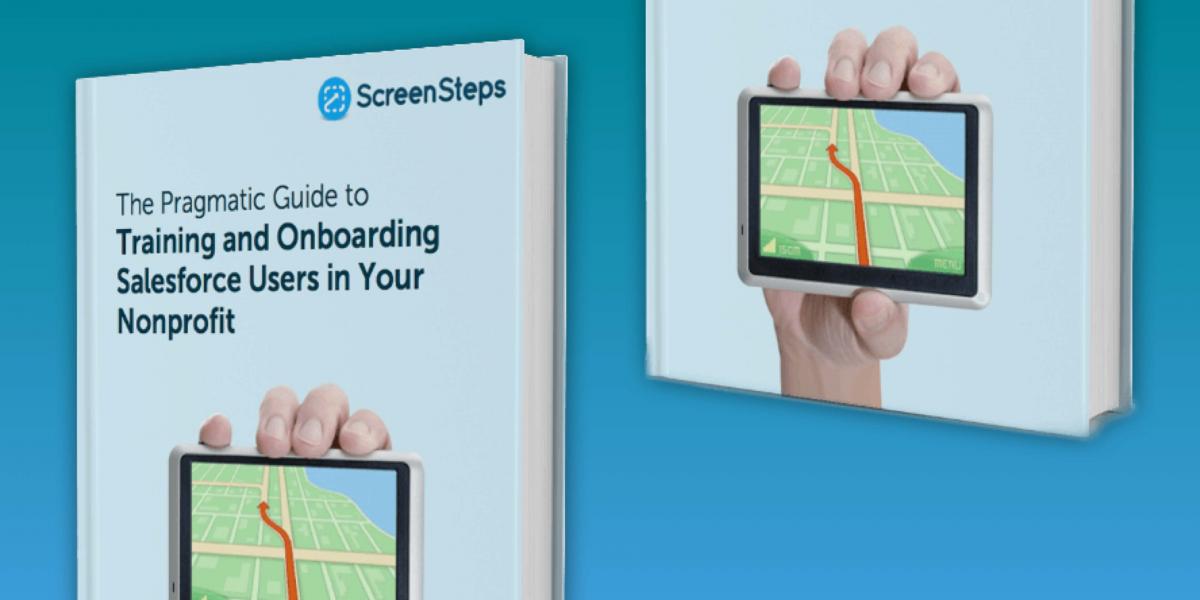This is a guest KELL Labs post written by Jonathan DeVore, Director of Customer Success at ScreenSteps. He and his team regularly blog about Salesforce training and user adoption. KELL has recently partnered with ScreenSteps to use their documentation product internally as well as with our clients for training and documentation. Their product makes it really easy for nonprofits to share documentation and keep new users up to speed as quickly as possible.
In today’s work environment, the only thing you can count on is that the labor force in your nonprofit organization is going to change. This happens primarily for three reasons: expansion, contraction and turnover.
When times are good, expansion will bring new faces to help with the workload and people will take on new responsibilities. When times are bad, you might have to right-size, let staff go, and people will take on extra responsibilities. And no matter what’s going on in the public sector or the private sector, you are going to experience turnover (especially if you use volunteers) – people just like to move on to something new.
This constant change in your workforce requires that you have an effective training plan that gets new hires up and running right away, and makes it easy to reassign jobs when necessary. But traditional training plans don’t work.
The traditional approach to Salesforce training is that everybody gathers around a projector and watches the presenter go through screens, type in words, and click a few buttons. But this approach isn’t practical in today’s work environment for one simple reason: Your team won’t remember how to do anything you show them.
20 years ago training presentations were effective and over the shoulder training worked, but in today’s environment there is simply too much going on to remember it all. Workflows are becoming more complex, and now require multiple on-screen and off-screen steps. This is especially true for nonprofits because Salesforce has made some processes much more complex and involved.
Having more complex workflows is not a bad thing, but the only way your team is going to be comfortable with new, complex workflows is if they go through it themselves several times, and do it correctly each time. You can either be there to personally coach everybody through each step every time they need help, or you can create a resource that does it for you.
This doesn’t mean you should scrap training meetings and presentations – those still have their place for teaching your team concepts and communicating the big picture. But if you want to keep up with the constant workforce changes (and workflow changes) your nonprofit organization will face, you need a resource that can help your team when you can’t – and that resource is documentation.
Salesforce training documentation will allow you to more easily bring new hires on, assign new responsibilities to your team, and train your organization on new workflows.
Here are 3 reasons documentation is so vital for managing the new workforce trends:
1 – You can more easily delegate tasks
If you’re asking somebody to set up a campaign for the first time, imagine how great it would be to say, “Hey Brian, can you set up a campaign this morning? Check out these steps to see how to do it.” If your documentation is good, you can start asking somebody to contribute with little to no coaching on his/her first day.
2 – You can train even when you’re not available
Documentation is always available to show somebody what to do – you are not. Documentation allows team members to learn at their own pace – not yours. Documentation can teach when your team is ready to learn – not only when you’re ready to train. Documentation doesn’t get impatient with team members who just can’t remember how to set up a campaign – you do.
3 – You will improve data consistency
One of the biggest problems with changes in the workforce is inconsistency. Three people doing the same process do it 3 different ways. Good documentation can be an authoritative resource that will demonstrate the correct workflow for performing every function. This is especially important for improving Salesforce adoption – Salesforce is only as good as the data it contains.
To get the most out of your Salesforce documentation, create a Salesforce documentation site (because PDF documentation is getting pretty outdated, too).
If your workforce never changed, then perhaps documentation wouldn’t be as important as it is. But in today’s work environment, you are either bringing somebody on, watching somebody go, or modifying your workflow. If you rely on outdated training methods, your operations are always going to be lagging because it will take a long time to fill in the knowledge gaps.
For tips on how to create Salesforce documentation for your nonprofit organization, download a free copy of the ScreenSteps eBook, “The Pragmatic Guide to Training and Onboarding Salesforce Users in Your Nonprofit.”




